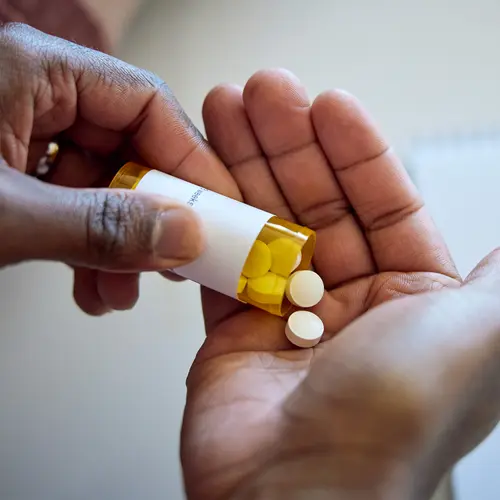People with schizophrenia have much higher rates of substance use disorders – including alcohol, tobacco, cannabis, and cocaine – than the general population. One study found 47% of people with schizophrenia struggled with drug or alcohol abuse as opposed to 16% who didn’t have the severe psychiatric disorder. Other studies reflect the wide gap, too.
Researchers agree it’s frequent, but they’re not sure why the link is so strong. There also might be more than one answer. For example, both schizophrenia and substance use disorders tend to run in families. Still, this comorbidity – i.e., when two conditions show up together – could be a blend of several factors, which can overlap.
Substance Use Disorders Are Mental Illnesses, Too
It’s key to know that a substance use disorder, or SUD, is a mental illness. Drugs change how your brain works and even how it’s wired. This is why some people crave and seek certain drugs, despite negative and often dire effects. Addiction is on the severe end of the SUD scale.
When paired with schizophrenia or other mental illness, the combination is often referred to as a co-occurring disorder. About half of people with a mental disorder, schizophrenia included, will have a SUD at some point, and the other way around.
What’s the Connection?
Over time, researchers have come up with a number of theories and findings that could help explain the link between schizophrenia and SUD. They include:
There may be overlap in the brain circuits involved with both conditions. Drug use over time causes neural changes in some of the same areas that schizophrenia disrupts. Also, there is a theory that problems in the brain reward circuitry that are affected by schizophrenia may contribute to the increased rate of SUDs in people with schizophrenia. For example, abnormal brain wiring might make nicotine, and perhaps other drugs, more gratifying.
People with mental illness might use drugs to self-medicate. Some psychiatric experts also think people with schizophrenia start relying on drugs because they feel it helps some of their symptoms, such as poor social functioning. This can include having a hard time with solving social problems, succeeding at work, and handling relationships with other people. This idea is called self-medicating.
SUD can appear before symptoms of schizophrenia, though. Studies show heavy substance use in adolescence might ramp up chances of having psychotic symptoms later in life.
Nicotine is a common addiction in people with schizophrenia. National survey samples have found the rate of smoking in people with schizophrenia as high as 90%. Several theories could explain this, aside from the brain reward circuit theory:
- Nicotine in tobacco products might help ease both some symptoms of schizophrenia and side effects of meds used to treat them.
- Nicotine, or just the smoking habit, might help ease anxiety or help cope with social stigma.
- A study on animal models of schizophrenia showed nicotine improved attention and memory.
Another type of brain deficit could play a part. A brain deficit is when a part of your brain doesn’t work as well as it should, such as poor working memory or a short attention span. Though these neural shortfalls might show up before psychotic symptoms do, some researchers believe that, in some cases, they’re symptoms of future SUDs and schizophrenia.
Genetics plus SUDs might bring on schizophrenia. A theory called the diathesis-stress model takes the viewpoint that, when genetic tendencies toward schizophrenia mix with severe substance use, the two can bring on schizophrenia. It’s key to note SUDs alone don't cause schizophrenia.
Also, there’s strong evidence that childhood trauma, when combined with genetic tendencies, can bring on symptoms of schizophrenia as well. These studies can be tricky – distressing events can be deeply buried in sometimes-faulty memories. It can be hard to nail down a timeline, too.
How SUDs Affects Schizophrenia
Substance use disorders are not only common with schizophrenia, they can be dangerous and destructive in many ways, including:
- You might stop complying with your mental health treatment.
- They can make day-to-day life even more difficult.
- They can result in more hospital stays.
- Your chances of violence go up.
- More suicides occur.
Treating Co-Occurring Conditions Together
Generally, mental health professionals believe SUDs and schizophrenia should be treated at the same time. A health care provider should evaluate the person for each disorder as part of a thorough evaluation.
Along with certain meds, behavioral therapies have been shown to help co-occurring disorders. Some examples:
- Cognitive behavioral therapy (CBT) is a form of talk therapy that challenges illogical thoughts and helps change behaviors in response to hard situations.
- Dialectical behavior therapy (DBT) draws on mindfulness and acceptance techniques to help make relationships better, control emotions, and cut back destructive behaviors.
- Assertive community treatment (ACT) is a team-based approach that helps the person be more a part of their community of choice, lessen hospital stays, and reduce homelessness.
For resources including treatment programs throughout the U.S., check out the Substance Abuse and Mental Health Services Administration (samhsa.gov).

